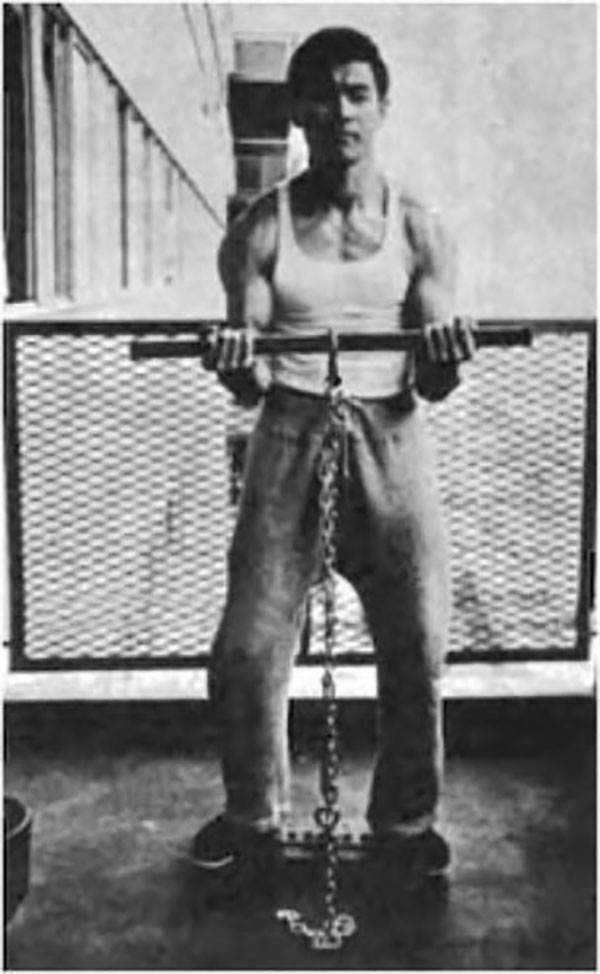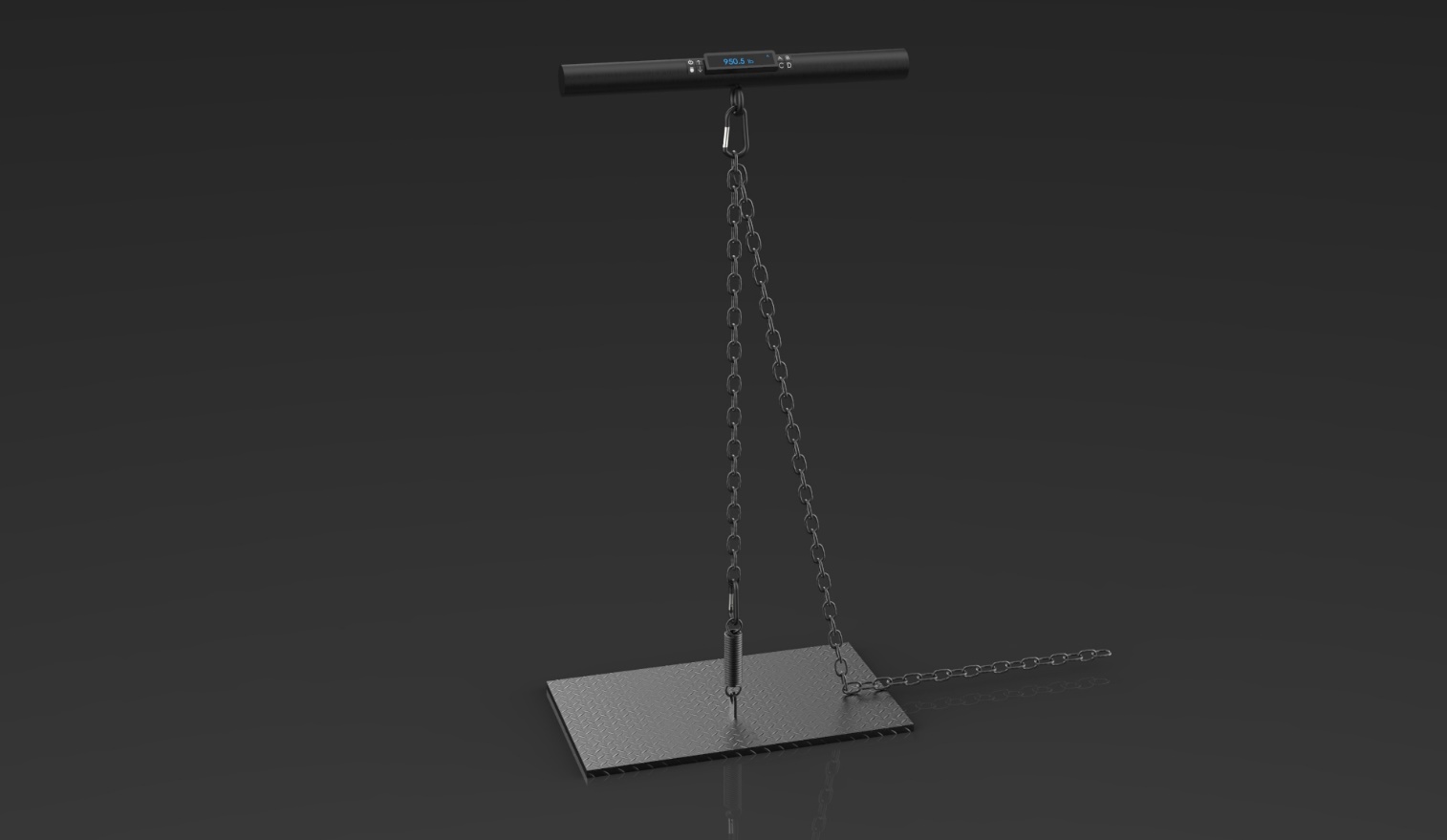Isometrics: Black Belt Tension Training
by Paul “Coach” Wade
For those of you who might be hesitant to look into isometrics—maybe you haven’t tried it, or you think it’s a "gimmick", or whatever—let’s talk some home truths, beginning at the beginning:
All strength is built on tension.
You already know this. It’s the
first piece of the puzzle when it comes to strength.
Unless you have mastered the art of generating great
tension in your muscular system, you cannot develop great
strength. It is impossible. Period.
The essence of true strength training lies in
reconfiguring your muscle software to be able to generate this tension. Even relatively small men and women can possess seemingly superhuman strength and power if they can master this art. You know this, too. It’s the second piece of the puzzle.
There is, however, a third piece.
Novices and intermediates, new to strength training, can progress quickly with conventional exercises. Strength "black belts" will require more effective and efficient methods to further develop their tension skills.
The number-one most effective and efficient method to master tension is through static exercise—isometric drills.
This is the third piece of the strength puzzle. This, you may not know.
This is down to a well-established physiological principle called the
Force-Velocity Relationship. This law, based on physics, states that muscle speed
slows down the more
tension the muscles generate. With low tension—a punch or kick, maybe—your muscles can move real fast. The more tension you add, the slower they move. If you wish to explore the
maximum level of tension your muscles can generate—and this should be the goal of all strength athletes—
you will have to do so with your muscles locked into position. This is isometrics.
The fastest possible way to gain strength is to find a method to generate
maximum tension (isometrics) and
repeat these maximum-tension efforts,
frequently. Doing so rapidly unlocks the built-in safety blocks on your nervous system (
cortical inhibition) so it becomes exceptional at recruiting more and more muscle fibers over time.
These principles are why isometric drills are the
fastest and
most powerful means of developing the total-body tension-generating skills needed for elite raw strength. Not by a little, either. By a LOT.
These were the drills used by the old-time strongmen, until they were badass enough to
bend steel and shatter chains. These were the drills used by Bruce Lee, who was passionate about
isometrics for building strength and speed.

Isometrics aren’t a relic of the past, however. The cream of modern strength and conditioning coaches—
Pavel Tsatsouline,
Louie Simmons,
Ross Enamait,
Bill Starr,
Dan John,
Christian Thibaudeau, and many more—have all championed isometrics.
As well as the accelerated strength benefits, isos are also a godsend to serious strength athletes and bodybuilders struggling with joint pain (and there are
many). The absence of
movement eliminates the internal friction which generally causes the damage and inflammation in the first place. Athletes who can no longer squat or press with free weights often find they can return to these exercises with isometrics—using even heavier loads.
Plus, because pure isometric work is autoregulated by the athlete’s own nervous system, the potential for acute injuries is vanishingly low.
So—if isometrics are such an advanced method for building strength and power while protecting the joints, why the hell isn’t everyone doing them?
Multiple reasons. One issue is the "gym myths" that have grown up around isos:
- Some folks think isos only make you strong at the angle you train at. (False. Muscle cells either contract or they don’t—they don’t know anything about limb angles. The force exerted at any angle by a muscle of a given strength is a simple function of mechanical leverage.)
- Some folks think isos don’t build muscle. (Disproven: isometrics are potentially even more effective than conventional methods for stimulating hypertrophy.)
- Some folks think isos make you slow. (Disproven. Studies have found that isometrics build speed just as effectively as explosive training methods.)
- Some folks think isometrics are bad for your blood pressure. (Disproven. Isometrics are at least as powerful as hypertensive medication at reducing high blood pressure.)
...And so on. For an eye-opening overview of the modern scientific picture, click
here.
Silly gym myths are a problem, sure. But the real "killer" for isometrics is—and always has been—
measurability.
Beyond having an Olympic-level coach, a special power rack and a gym full of plates on command, progressive, scientific, total-body isometric training has been virtually impossible.
Until now.
In early 2020, Dragon Door release the first-ever isometric chain-and-plate equipment with digitally accurate measurability via a display in the handle—the ISOCHAIN.

Made of toughened black steel and ultramodern materials, the ISOCHAIN is fully portable and weighs just a few pounds, yet is rated up to a
thousand pounds of force.
Check out further design features of the ISOCHAIN
here.
It’s one of the most versatile pieces of strength equipment in existence, and can accommodate the very best hardcore isometric exercises: deadlifts, squats, presses, rows, curls, shrugs, heavy grip work, high pulls, triceps presses, calf raises, and so on. If you can do it with a barbell, you can probably do it with the ISOCHAIN. But heavier, and with far greater force measurability.
Survey some ISOCHAIN drills and training concepts
here.
Are you ready to be the first of a new wave of athletes? If you are, you’d better take a good long look at this new equipment. Yep, the ISOCHAIN breaks conventions. Some will say it’s a gimmick.
It’s not. People said the same things about kettlebells. People said the same thing about bodyweight strength training.
They were wrong then, too.
Back